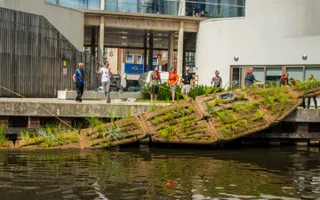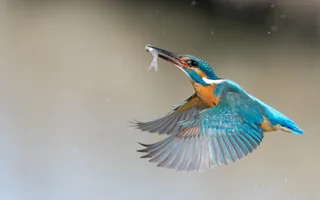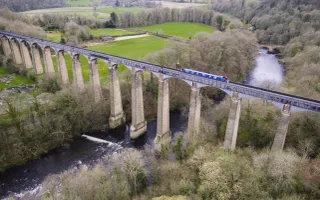We're on the Gloucester & Sharpness Canal today in Gloucester Docks, installing some floating reed islands. The reed islands make a massive difference to biodiversity, bringing lots of different species into the urban area of the Gloucester Docks. So, when the roots start to grow through the islands into the water, the fish will have like a mini jungle where they'll be able to hide amongst roots and be safe away from predators.
This will also make a really big difference for people coming to visit the Gloucester Docks because they'll be able to see this natural bright colours of the flowers the yellows and the purples through the summer and listen to the sound of the water, which we know is so good for mental well-being.
We've been planting up some floating reed beds. We've been putting the plants into the coir matting and then helping them drop them into the water. It's going to look good. Obviously the plants are still quite small at the moment, it's start of the growing season by the end of the summer all the plants are going to hopefully provide a bit of colour. It's going to have a really good impact.
We've had lots of people stop and ask what we've been doing today. It'd be good to come back and see how they grow over the next few months. The volunteers have done a fantastic job today and we know that we're having a real impact for habitats and species. I'm sure many people have heard that we are in the midst of a biodiversity crisis which means that we're losing habitats and species at a shocking rate but by being able to bring some of this nature into the city, we can give those species a safe way of moving across the landscape providing them with more places that they can live.








